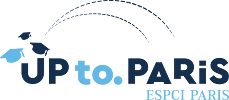SrTiO3 is the most dilute superconductor currently known [1]. With only 10-5 electron per formula unit, the system becomes superconducting. The insulating parent of this remarkable superconductor is a quantum paraelectric, which becomes a true ferroelectric by replacing strontium with calcium. We have recently discovered that the two orders coexist in Ca-substituted-oxygen-deficient strontium titanate [2]. This coexistence is surprising. Ferroelectricity is a state of matter with a macroscopic reversible static electric dipole and expected in an ionic insulator without inversion symmetry. Superconductivity occurs in a metal leading to a macroscopic condensate of Cooper pairs. These two states of matter have little in common. However, we find that not only they tolerate each other, but quantum fluctuations of the ferroelectric order strengthen superconductivity. The aim of this research project is to explore this intriguing case of ferrolectric quantum criticality.
[1] Xiao Lin, Zengwei Zhu, Benoît Fauqué and Kamran Behnia, “The Fermi surface of the most dilute superconductor”, Phys. Rev. X 3, 021002 (2013).
[2] C. W. Rischau, X. Lin, C. P. Grams, D. Finck, S. Harms, J. Engelmayer, T. Lorenz, Y. Gallais, B. Fauqué, J. Hemberger and K. Behnia, “A ferroelectric quantum phase transition inside the superconducting dome of Sr1−xCaxTiO3−δ”, Nature Physics 13, 643 (2017).
Keywords
Superconductivity, ferroelectricity, electronic orders, structural transitions, metal-insulator transition, thermoelectricity, thermal and charge transport
Research unit
UMR8213
Physics & Materials
Description of the research Unit/subunit
The successful candidate will join the Quantum Matter group of the Laboratoire Physique et Etude des Matieriaux (LPEM) located at ESPCI. The group studies the electrical and thermal transport of strongly correlated metals and semi-metals. A list of publications can be found here :
http://qm.lpem.espci.fr/spip.php?rubrique21.
The group has access to : i) a 17T magnets with two dilution inserts ; ii) a PPMS (Physical Properties Measurement Systems) with a 14T magnet allowing to cover a large temperature range with home-made inserts.
Name of the supervisor
Kamran Behnia
Name of the co supervisor
Benoît Fauqué
3i Aspects of the proposal
Modern technology is based on the manipulation of the flow of electrons. The present project is an effort to better understand such flow in particular circumstances. It is impossible to predict its technological impact. Ferroelectricity and superconductivity were thought to be mutually exclusive. The ferroelectric instability is associated with the formation of spontaneous polarization in an insulator. Superconductivity leads to zero electric resistance. Our recent work on has shown that the two orders can coexist. The project, while clearly identified as a project, connects two distinct subfields in condensed-matter physics. This project is embedded in a French/German consortium between our group and researchers in University of Cologne. The PhD candidate will strongly benefit of this ongoing collaboration as well as others with University of Geneva, University of Cambridge and ETH-Zurich.
Expected Profile of the candidate
The candidate is expected to be a physicist, with a background in condensed-matter physics and motivated to perform difficult experiments. A basic knowledge of the quantum theory of solids, combined to a healthy intellectual curiosity and a taste for experimental research are what we are looking for.
